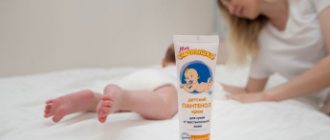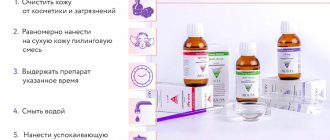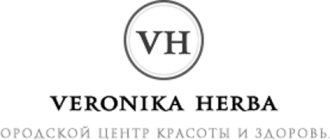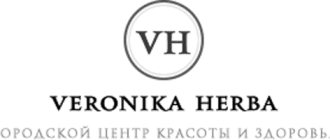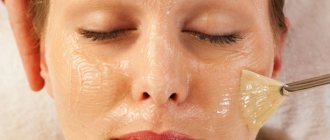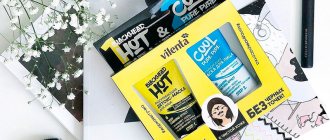What properties does azelaine peeling have?
Rye, wheat and barley contain azelaic acid. In the human body it is synthesized during lipid metabolism; industrial production is based on the oxidation of oleic or linoleic acid. Pharmacists and cosmetologists use potassium azeloyl diglycinate. This water-soluble compound, being an acid derivative, is chemically inert and has a strong brightening effect.
Azelaic acid is less active as an exfoliating agent compared to other organic acids, but it has a number of useful characteristics:
- powerful antimicrobial effect not only on surface pathogens, but also on microbes located in the hair follicles;
- highly effective against Staphylococcus epidermidis and propionic bacteria, which contribute to acne;
- a course of azeloin peels will significantly reduce the number of microbes that cause inflammatory processes;
- the anti-inflammatory effect extends to the deeper layers of the skin;
- good antioxidant properties;
- inhibition of increased activity of the sebaceous glands;
- preventing increased pigmentation by blocking the growth of melanocytes;
- normalization of keratinization of the epidermis.
Operating principle and effectiveness
Primary peeling with azelaic acid involves preliminary preparation of the skin. To do this, cosmetologists recommend treating the face for a week with special formulations containing AHA acids and softening the upper layer of the epidermis. Preparation is done at home and does not require special professionalism.
IMPORTANT! On the eve of the cleansing procedure, you should make sure that there is no allergic reaction to azelaine. To do this, just apply a small amount of peeling composition to the elbow.
The manipulation itself is carried out according to the standard principle: after demo-makeup and degreasing, the peeling mixture is directly applied to the face. This does not affect the area around the eyes and lips. To prevent accidental contact with delicate areas of the skin, it is possible to pre-treat them with a fatty cream or a product containing silicone. Through circular movements, the main composition spreads throughout the epidermis. The skin is exposed to azelaic acid for 7-10 minutes.
After the set time has passed, the active substance is removed from the surface of the dermis using distilled water. After cleansing the face with azelaic acid, a soothing composition is applied to the treated area, which remains on the skin for at least 4 hours.
This kind of peeling is not aggressive, so skin regeneration occurs quickly and painlessly. During the rehabilitation period, care products are prescribed to help restore water balance and prevent various types of inflammation.
The number of subsequent procedures is determined individually. Manipulations are carried out once every 1-2 weeks.
A course of treatment with azelaine allows you to:
- Eliminate acne at different stages of maturation;
- Get rid of blackheads;
- Reduce skin oiliness;
- Reduce the appearance of pigmentation;
- Reduce the rosacea network;
- Smooth out small wrinkles;
- Prevent inflammatory processes in the upper layers of the dermis.
Advantages of azelaine peeling
1.
Since azelaic acid is natural to the human body, it does not cause allergic reactions and is almost always well tolerated.
2.
Repeated use does not reduce the effect of antibacterial therapy.
3.
Can be used at home, since the likelihood of negative consequences is extremely low.
4.
The product can be used by young and fairly old people, as well as dark-skinned people with post-acne.
5.
After use there are no comedones or formation of sebaceous plugs.
6.
A short rehabilitation period after the procedure (only a few hours). You can cleanse your skin at any time of the year if you use sunscreen on sunny days.
Biostimulation and regeneration using all-season combined peelings.
The skin is one of the largest organs of the human body, which performs many different functions, ranging from protection from the harmful effects of external factors, ensuring thermoregulation, metabolic processes and maintaining water balance to aesthetic function.
Both at a young and older age, exposure to unfavorable external and internal factors leads to the manifestation of various skin problems.
Chemical peels help to successfully correct the unsatisfactory condition of the skin, which effectively stimulates cell function and triggers the natural process of synthesis of the necessary components for skin regeneration.
The method is based on controlled damage to certain layers of the epidermis and, in some cases, the upper layers of the dermis. When the skin is damaged, protective mechanisms are triggered, and cells release many different signaling molecules, which leads to the launch of a whole cascade of various processes leading to self-healing of the skin. As a result, the stratum corneum becomes smoother and more uniform, the epidermis thickens, the dermis becomes firmer and more elastic, and the epidermal barrier is restored.
Using the peeling procedure, you can solve a wide range of aesthetic problems:
- hyperpigmentation,
- atrophic and hypertrophic scars,
- elements of acne and post-acne,
- signs of photo- and chronoaging.
Another significant advantage of the chemical peeling procedure is that it does not require expensive equipment, is affordable and can be easily performed in a beauty salon.
Thus, correct diagnosis and selection of the appropriate drug for the peeling procedure help solve a wide range of aesthetic problems and preserve beauty and youth for many years.
One of the most popular peelings in use are Angiopharm Peelings, which represent a completely new approach to methods for correcting aesthetic problems. The main features of Angiopharm Peelings are a multifactorial effect on the skin to launch renewal processes at the cellular level.
Angiopharm Peelings peeling products, a mechanism of targeted stimulation of regenerative processes is added to the classical action of acids: acids loosen the stratum corneum, cause controlled inflammation to launch renewal processes, and bioactive components (recombinant angiogenin, peptides, PDRN) stimulate factors of cell production and differentiation, have an immunomodulatory effect effect and have a positive effect on reparation processes. As a result of this combined action, active stimulation of the synthesis of the components of the interstitial substance is achieved.
The line of peelings from Angiopharm (Angiopharm) includes:
Weekend peeling, universal, soft peeling with PDRN, Ph 3.0-3.5
It has a mild exfoliation effect without redness and peeling, normalizes the natural cycle of epidermal cell renewal (28 days). Helps quickly eliminate signs of fatigue and stress, moisturizes and nourishes the skin. The optimal product for regular prevention of bio- and photoaging.
Peeling Azelain, whitening, anti-inflammatory peeling, Ph 3.0-3.5
The alcohol base ensures rapid deep penetration of the peeling into the skin, reaching the middle layers of the epidermis. The combination of azelaic and salicylic acid has an intense lightening effect and helps remove all types of age spots. It has a powerful antibacterial and anti-inflammatory effect, moisturizes and mattifies the skin.
Peeling Ferulic, antioxidant, remodeling peeling, pH 2.5-3.0
Alcohol-based anti-aging peeling has high penetrating ability and a powerful rejuvenating, regenerating and lifting effect due to the combination of acids and bioenzymes. Peeling smoothes fine and deep wrinkles, evens out complexion, helps eliminate pigmentation and improves skin tone. Peptides promote active synthesis of collagen and elastin.
Sources: https://www.1nep.ru/, https://angiofarm.com/.
Who can and who cannot undergo peeling with azelaic acid?
Azelaine peeling will help in the treatment of many dermatological diseases (consultation with a cosmetologist or dermatologist is required). When combined with other ingredients, the acid strengthens the walls of the capillaries, thereby preventing spider veins and reducing the existing consequences of vasodilation. For inflamed hair follicles and ingrown hairs, it is also recommended to take a course of azelaine peeling. This is a fairly effective remedy in the fight against photoaging; prescribed in preparation for laser resurfacing and deep facial cleansing. Depigmenting peels often contain nonandioic acid.
When not to use azelaine peeling:
- pregnancy and breastfeeding;
- herpes in the acute stage;
- drug intolerance;
- skin damage;
- inflammatory processes (except for those indicated in the indications).
The skin reacts to acid peeling with redness, itching, mild burning and tingling, to the point of numbness. The redness disappears after 2–3 hours. If you experience an allergic reaction, excessive dryness, swelling or exacerbation of skin inflammation that persists for 2-4 weeks, you should visit a dermatologist.
Recommendations from cosmetologists
The question often arises about the length of time azelaine remains on the skin of the face. Cosmetologists identify several factors that should be taken into account when choosing how long to keep the components of azelaine peeling and what concentration to use.
Determining factors include:
- Presence/absence of preliminary preparation of the person;
- Sensitivity threshold of the patient's skin.
In the absence of a prepared surface or a high predisposition of the dermis to irritation, it is suggested to use a gentle composition with a low percentage of acidity for a short time (3-4 minutes). Subsequently, the concentration and time can be gradually increased. The maximum permissible acid percentage is 30%. The upper limit of the time frame is 10-15 minutes.
What is the effect of peeling with azelaic acid?
In order for the result to be “obvious”, it is necessary to undergo a course of 3–10 procedures with a break between them of 7–14 days. After peeling, the skin color improves, it becomes clean and silky to the touch. Redness from rosacea and rosacea is significantly reduced. Oily shine disappears, signs of acne decrease or disappear.
When azelaic and lactic acid are used together, the tone is evened out and the water balance of the skin is restored. Turgor increases, peeling disappears. If you use glycolic acid together, wrinkles, stretch marks, and senile pigmentation are reduced - the skin is rejuvenated as a whole. The result is long-term, over 6 months, after which you can repeat the course.
How to do azelaine peeling at home
Cleaning can be done at home, subject to prior consultation with a cosmetologist. The specialist will determine the effectiveness of the chosen procedure regarding the skin condition and recommend the appropriate acid concentration.
Using azelaine peeling at home requires step-by-step adherence to the following rules:
- Cleansing and degreasing the skin;
- Protection of eyes and mucous membranes from acid composition;
- Applying and rubbing the peeling substance for 7-10 minutes;
- Careful removal of azelaine;
- Application of a sedative.
As in the salon, the home procedure involves a week of preparing the face with products containing AHA acids. Otherwise, the time for the first dry cleaning should be reduced.
How to care for your skin before and after azelaine peeling?
A few days before the first procedure, it is necessary to test the skin for drug tolerance. The test is carried out on the bend of the elbow: the product is applied and the necessary time is allowed to take effect. Cosmetics used during the preparatory period must contain fruit and soft carboxylic acids and have protective properties against UV radiation from the sun.
After the session, you should strictly follow the recommendations on how to care for your skin. For half a month, use soothing and moisturizing products that accelerate skin restoration and prevent infection. You should also avoid solariums, baths and swimming pools. Use creams with sun protection factor SPF 30 or higher.
Reviews from cosmetologists
Among cosmetologists, the azelaine peeling procedure is gaining popularity, which is confirmed by reviews from specialists who have experienced the properties of this acid.
“I usually use it as a preparatory component for medium and deep chemical peels. This way the end result is more noticeable. The clients are happy."
“I don’t use this peeling in its pure form. I prefer to combine it with lactic or mandelic acids. The resulting cocktail allows me to reduce the number of procedures, which my patients welcome.”
“I’ve only recently been working with the azelaine composition, but I’ve already noticed how gentle it is. I come to my rescue if I have to deal with hypersensitive skin. At the same time, I start with a low concentration and gradually increase it.”
“I use azelaine to treat acne in teenagers. I'm afraid to upset the balance of young skin with other peels. Here, recovery occurs quickly, and inflammation is significantly reduced. At the same time, patients do not feel much discomfort.”
“I use this acid on thin, pigmented skin. I also noticed a good reaction of azelaine to the rosacea mesh. It is not possible to completely remove it, but reducing the intensity of its manifestation is quite possible.”


